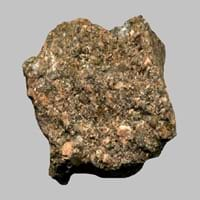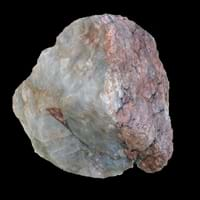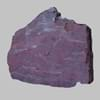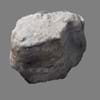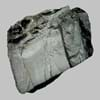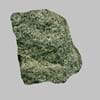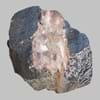Definition
Arkose is a sedimentary rock, specifically a type of sandstone containing at least 25% feldspar
Pegmatite rock is a holocrystalline, intrusive igneous rock which is composed of interlocking phaneritic crystals
Discoverer
Alexandre Brongniart
R. J. Hauy
Etymology
From Auvergne region of France used by a French geologist Alexandre Brongniart in 1826 who applied this term to some feldspathic sandstones
From Greek pegma, pegmat which means- thing joined together + -ite
Class
Sedimentary Rocks
Igneous Rocks
Sub-Class
Durable Rock, Hard Rock
Durable Rock, Hard Rock
Group
Not Applicable
Plutonic
Other Categories
Coarse Grained Rock, Opaque Rock
Coarse Grained Rock, Opaque Rock
Texture
Clastic
Pegmatitic
Color
Reddish Brown
Black, Brown, Cream, Green, Grey, Pink, Red, Rust, Silver, White, Yellow
Durability
Durable
Durable
Scratch Resistant
Yes
Yes
Appearance
Rough and Dull
Layered, Banded, Veined and Shiny
Interior Uses
Decorative Aggregates, Homes, Interior Decoration
Decorative Aggregates, Flooring, Interior Decoration
Exterior Uses
Paving Stone, Office Buildings
As Building Stone, As Facing Stone, Paving Stone
Other Architectural Uses
Whetstones
Curbing
Construction Industry
Cement Manufacture, Construction Aggregate, for Road Aggregate, Production of Glass and Ceramics, Raw material for the manufacture of mortar
As Dimension Stone, Building houses or walls, Construction Aggregate, for Road Aggregate, Landscaping
Medical Industry
Not Yet Used
Not Yet Used
Antiquity Uses
Artifacts, Sculpture, Small Figurines
Artifacts, Sculpture, Small Figurines
Commercial Uses
In aquifers, Soil Conditioner, Source of Magnesia (MgO), Tombstones
Creating Artwork, Jewelry, Source of corundum, tourmalines, beryls and topaz
Types
Not Available
Granite Pegmatite, Gabbro Pegmatite and Diorite Pegmatite
Features
Available in Lots of Colors and Patterns, Generally rough to touch, Is one of the oldest rock
Generally rough to touch, Is one of the oldest rock, Source of corundum, tourmalines, beryls and topaz
Archaeological Significance
Monuments
Not Yet Used
Not Yet Used
Famous Monuments
Not Applicable
Not Applicable
Famous Sculptures
Data Not Available
Data Not Available
Pictographs
Not Used
Not Used
Petroglyphs
Not Used
Not Used
Formation
Arkose rock forms from the weathering of feldspar-rich igneous or metamorphic rock, most commonly granitic rocks, which are primarily composed of quartz and feldspar.
Pegmatite rock is holocrystalline, intrusive igneous rock which is formed by partial melting and dewatering during the process of metamorphism.
Mineral Content
Calcite, Clay, Clay Minerals, Feldspar, Micas, Quartz
Apatite, Beryl, Feldspar, Fluorite, Garnet, Lepidolite, Quartz, Silica, Spodumene, Topaz
Compound Content
Aluminium Oxide, CaO, Iron(III) Oxide, Potassium Oxide, MgO, Sodium Oxide, Silicon Dioxide
Aluminium Oxide, CaO, Iron(III) Oxide, FeO, Potassium Oxide, Magnesium Carbonate, MgO, Phosphorus Pentoxide
Types of Metamorphism
Not Applicable
Burial Metamorphism, Cataclastic Metamorphism, Contact Metamorphism, Hydrothermal Metamorphism, Impact Metamorphism, Regional Metamorphism
Types of Weathering
Biological Weathering, Chemical Weathering, Mechanical Weathering
Biological Weathering, Chemical Weathering, Mechanical Weathering
Types of Erosion
Coastal Erosion, Glacier Erosion, Water Erosion, Wind Erosion
Chemical Erosion, Coastal Erosion, Glacier Erosion, Sea Erosion, Water Erosion, Wind Erosion
Grain Size
Coarse Grained
Medium to Coarse Grained
Fracture
Conchoidal
Conchoidal
Porosity
Highly Porous
Less Porous
Luster
Dull
Grainy, Pearly and Vitreous
Compressive Strength
Not Available
Cleavage
Not Available
Perfect
Toughness
Not Available
2.1
Specific Gravity
0
2.6-2.63
Transparency
Opaque
Translucent to Opaque
Density
Not Available
2.6-2.65 g/cm3
Resistance
Heat Resistant, Impact Resistant, Pressure Resistant
Heat Resistant, Impact Resistant, Pressure Resistant
Deposits in Eastern Continents
Asia
China, India, Kazakhstan, Mongolia, Russia, Uzbekistan
China, India, Iran, Japan, Nepal, North Korea, Russia, Saudi Arabia, South Korea
Africa
Namibia, Nigeria, South Africa
South Africa
Europe
Austria, Denmark, Germany, Great Britain, Netherlands, Norway, Poland, Sweden, Switzerland, United Kingdom
Austria, France, Greece, Ireland, Italy, Netherlands, Slovakia, Spain, Turkey, Ukraine
Others
Greenland
Not Yet Found
Deposits in Western Continents
North America
Canada, USA
Canada
South America
Brazil
Brazil
Deposits in Oceania Continent
Australia
New South Wales, New Zealand
New South Wales, Queensland, South Australia, Western Australia
All about Arkose and Pegmatite Properties
Know all about Arkose and Pegmatite properties here. All properties of rocks are important as they define the type of rock and its application. Arkose belongs to Sedimentary Rocks while Pegmatite belongs to Igneous Rocks.Texture of Arkose is Clastic whereas that of Pegmatite is Pegmatitic. Arkose appears Rough and Dull and Pegmatite appears Layered, Banded, Veined and Shiny. The luster of Arkose is dull while that of Pegmatite is grainy, pearly and vitreous. Arkose is available in reddish brown colors whereas Pegmatite is available in black, brown, cream, green, grey, pink, red, rust, silver, white, yellow colors. The commercial uses of Arkose are in aquifers, soil conditioner, source of magnesia (mgo), tombstones and that of Pegmatite are creating artwork, jewelry, source of corundum, tourmalines, beryls and topaz.
